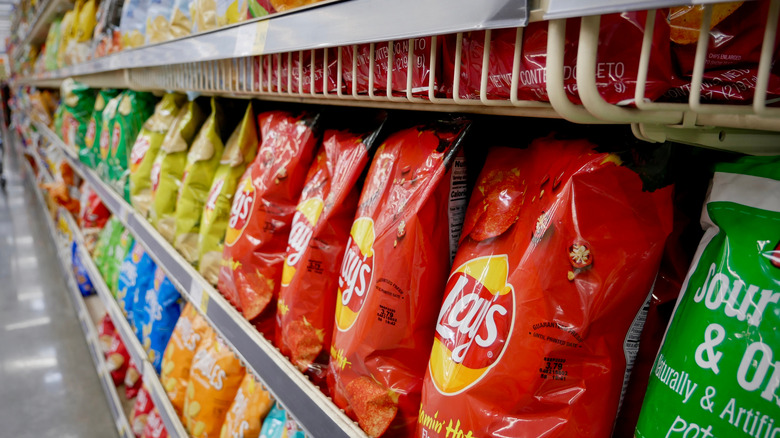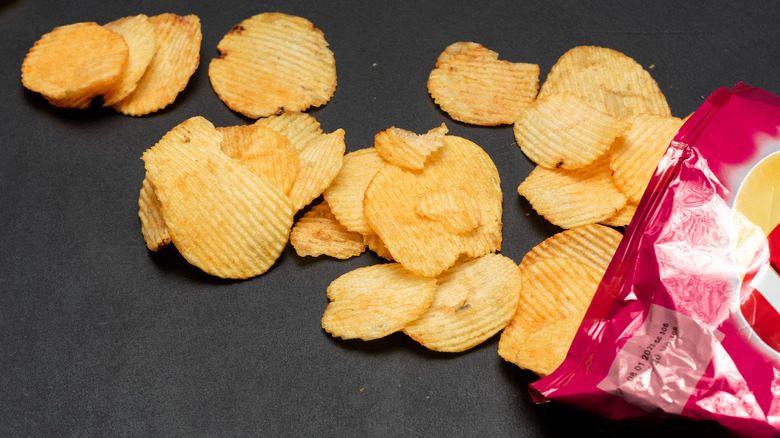If You Live In A High-Altitude Area, Here's Why Your Chip Bags Look Inflated
Did you know that higher altitudes have an effect on how certain foods are cooked or baked? It's true. The further up you are from sea level, the lower the air pressure, which requires foods to be baked at higher temperatures and/or for longer periods of time, according to Betty Crocker. Why is this the case? To put it simply, the atmospheric pressure is lower at higher altitudes, which causes water to boil at lower temperatures and leads food to dry out quicker when baked (per USDA, via Huffington Post).
People who live in mountainous regions are well aware of these vulnerable laws of science and must adapt their culinary methods in various ways to get dishes just right. Residents of elevated cities in states like Colorado, Utah, California, and Alaska are all too familiar with this phenomenon. Places that are, shall we say, closer to the clouds also may notice that certain product packaging looks a bit different than in places with lower altitudes. One of these instances is snack bags that appear slightly inflated. But how does this happen, exactly? Keep reading for a quick physics lesson.
Higher altitudes result in lower atmospheric pressure and puffier chip bags
If you've ever taken a physics course, this concept may ring a bell. The answer lies in Boyle's Law, which states that the pressure and volume of gas in a container are inversely related, according to HowStuffWorks. Several Redditors have even contributed to answering the question on the "Explain Like I'm Five" subreddit. One user attributes Boyle's Law to this effect, explaining, "The volume and pressure of a gas are inversely proportionate. As pressure decreases, volume increases. As pressure increases, volume decreases. As you go higher in altitude, the atmospheric pressure drops, which makes the air molecules 'spread out.' The molecules in the bag try to do the same thing, which 'puffs up' the bag like a balloon."
As another user clearly spells out, air essentially becomes trapped in the bags when the contents are sealed at low elevations. Then, as the bags ascend — i.e., when they are placed on shelves in high-altitudinous grocery stores — the volume inside the bags stays the same although the atmospheric air is seemingly thinner. Therefore, the pressure of the air inside the bag exceeds the air pressure outside of it, causing it to push out like an inflated balloon.
If you ever travel to a location with puffier chip bags than usual, you can be assured that Boyle's Law is in action. See? Science really can be all that and a bag of potato chips.

